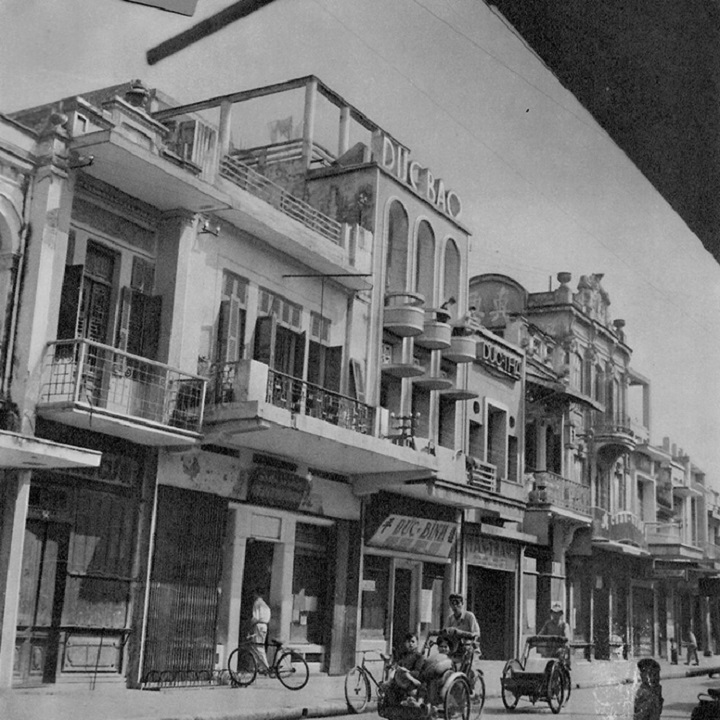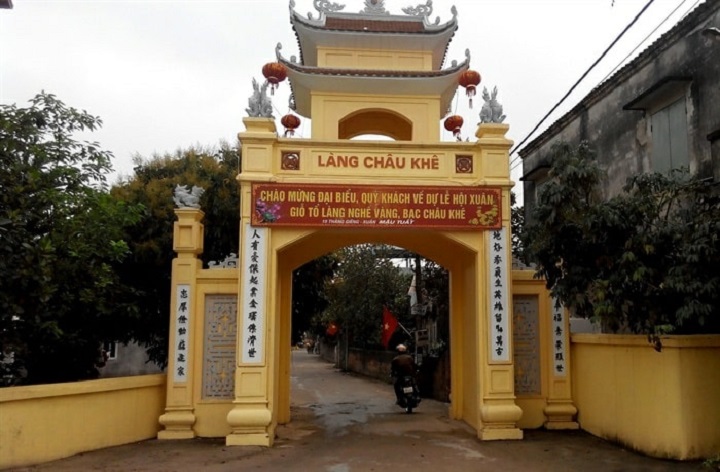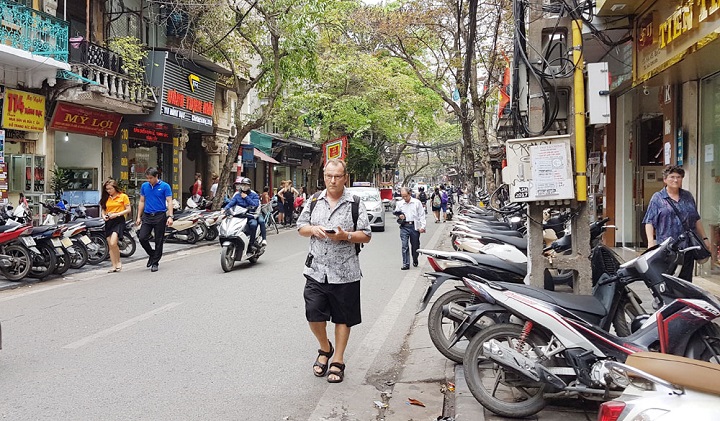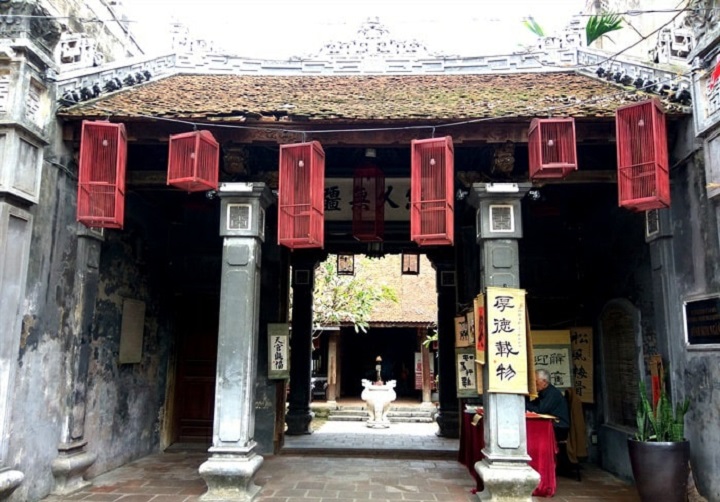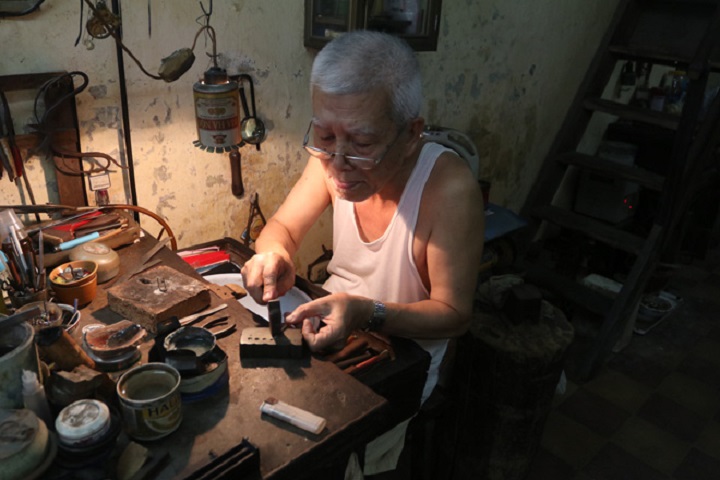Hang Bac Street is one of 36 traditional trade streets in Hanoi that each featured a profession shown by its name in the past such as Hang Muoi (salt) Street selling salt, Hang Manh (curtain) Street selling bamboo curtains, Hang Duong (sugar) Street selling sugar and honey products, Hang Giay (shoe) Street selling shoes, among others. Among them, Hang Bac Street seems the “richest” one selling silver jewelry.
| The Hang Bac street at the end of 19th century/ Documentary Photo. |
Origin of the street
In the old time, Hang Bac specializes on silver casting, jewelry and money exchange. These professions came from three famous gold and silver craft villages in northern Vietnam including Chau Khe village (Hung Yen province), Dong Xam village (Thai Binh province) and Dinh Cong village (Hanoi).
In the 15th century, a feudal mandarin under the Le Dynasty (1428-1527) was assigned to set up a silver casting workshop in Thang Long capital city (Hanoi today) as silver and gold bars were used as currency.
He brought workers from his hometown of Chau Khe village to the capital to establish the factory and work there.
| Chau Khe village (Hung Yen province) is one among three famous gold and silver craft villages in northern Vietnam where the first ever Hang Bac street’s silversmiths came from. Photo collector: Do Hoai Giang. |
After a while, along with silver casting, Chau Khe craftsmen also made gold and silver decorating products. In the early 19th century, under the Nguyen Dynasty (1802-1945), the silver casting workshop was moved to Hue Central city as the capital was settled there.
However, most of Chau Khe workers stayed in Thang Long to continue their work as jewelers. They set up a guild in Hang Bac Street today. Soon it attracted other craftsmen in the two other gold and silver trade villages of Dinh Cong and Dong Xam to join.
Since then, Hang Bac street has become a well-known address for jewelry and gold and silver products in Hanoi. Along with production and trade, here also exchanged bar silver for scrap one.
Therefore, during the French colonial period, this street was also called “Rue de changeurs” (The street of money exchangers).
A new appearance
| Hang Bac street today. Photo: Kinh te & Do thi. |
Hang Bac today is only about 0.5 kilometer long but hundreds of large and small shops are located here. The traditional trade of making jewelry and gold and silver products still remains from experienced craftsmen as well as their young generation who succeed the traditional trade of the family.
Although most of the shops today have been equipped with new advanced technology, some families still keep the handicraft tools of their ancestors.
Admitting the making of gold, silver and jewelry products today is now supported by modern machines and advanced technology, none of them can be compared with the sophistication and uniqueness of the jewelers’ hands.
With handicraft tools, the jeweler in Hang Bac street has made many exquisite products, especially jewelry.
| The Kim Ngan Temple to worship ancestors of silversmiths from Hang Bac street. Photo collector: Do Hoai Giang. |
A variety of jewelry with diverse designs have been found here such as earrings, rings, necklaces, bracelets, ornaments and so on.
There are two main categories of products here. One is plain items such as rings, earrings and bracelets, for women or children. The other is carved ones – the most famous products of the craftsmen in Hang Bac.
There are popular decorative patterns to carve. Four Asian sacred animals (dragon, unicorn, turtle, and phoenix) are the most favourite ones. Particularly, the dragon comes with various themes, thanks to the skillful hands of the craftsmen.
| Mr. Nguyen Chi Thanh, one of the silversmith at Hang Bac street. Photo: VNA. |
Besides, other popular images are also carved like people and trees and flowers that represent the good qualities following the Oriental culture such as bamboo, orchid, ochna, daisy, among others.
All of them feature either the raised carving or the sunken one, the two outstanding styles for the products here. Nowadays, the craft of making jewelry and gold and silver products as well as money exchange is also available in other streets in Hanoi.
However, Hang Bac is still the first place that people come for gold and silver, thanks to the leading talented craftsmen with their history and reputation of centuries.


